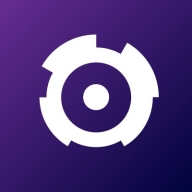

ITRS Geneos and Pico Corvil Analytics compete in the IT performance monitoring and analytics category. Pico Corvil Analytics appears to have the upper hand due to its robust features, which offer enhanced visibility and performance optimization.
Features: ITRS Geneos provides real-time monitoring, customizable alerts, and precise insights into IT infrastructure. Pico Corvil Analytics delivers comprehensive network analytics, advanced data analytics, and performance optimization capabilities.
Room for Improvement: ITRS Geneos could improve by simplifying configuration, enhancing integration capabilities, and boosting its data analytics features. Pico Corvil Analytics might benefit from lowering setup complexity, providing a more competitive price point, and offering more user-friendly analytics interfaces.
Ease of Deployment and Customer Service: Pico Corvil Analytics features a straightforward deployment model and responsive customer service. ITRS Geneos offers effective deployment options but may require more configuration for specific business alignment.
Pricing and ROI: ITRS Geneos is appealing for businesses mindful of initial setup costs and focused on high ROI through infrastructure monitoring. Pico Corvil Analytics offers a potentially higher setup cost but justifies it with sophisticated analytics that drive strategic impact.
| Product | Market Share (%) |
|---|---|
| ITRS Geneos | 0.5% |
| Pico Corvil Analytics | 0.5% |
| Other | 99.0% |


| Company Size | Count |
|---|---|
| Small Business | 6 |
| Midsize Enterprise | 12 |
| Large Enterprise | 39 |
| Company Size | Count |
|---|---|
| Small Business | 2 |
| Midsize Enterprise | 1 |
| Large Enterprise | 6 |
ITRS Geneos is a real-time monitoring tool designed for managing increasingly complex, hybrid and interconnected IT estates.
Built with financial services and trading organisations in mind, it collects a wide range of data relating to server performance, infrastructure, trading, connectivity and applications, and analyses it to provide relevant information and alerts in real time.
Geneos can give full stack visibility across highly dynamic environments and presents all the information through a single pane of glass and its configurable and customisable dashboards provide end-to-end visibility to both technical and business users.
For more information, please visit https://www.itrsgroup.com/products/geneos
We monitor all Network Monitoring Software reviews to prevent fraudulent reviews and keep review quality high. We do not post reviews by company employees or direct competitors. We validate each review for authenticity via cross-reference with LinkedIn, and personal follow-up with the reviewer when necessary.